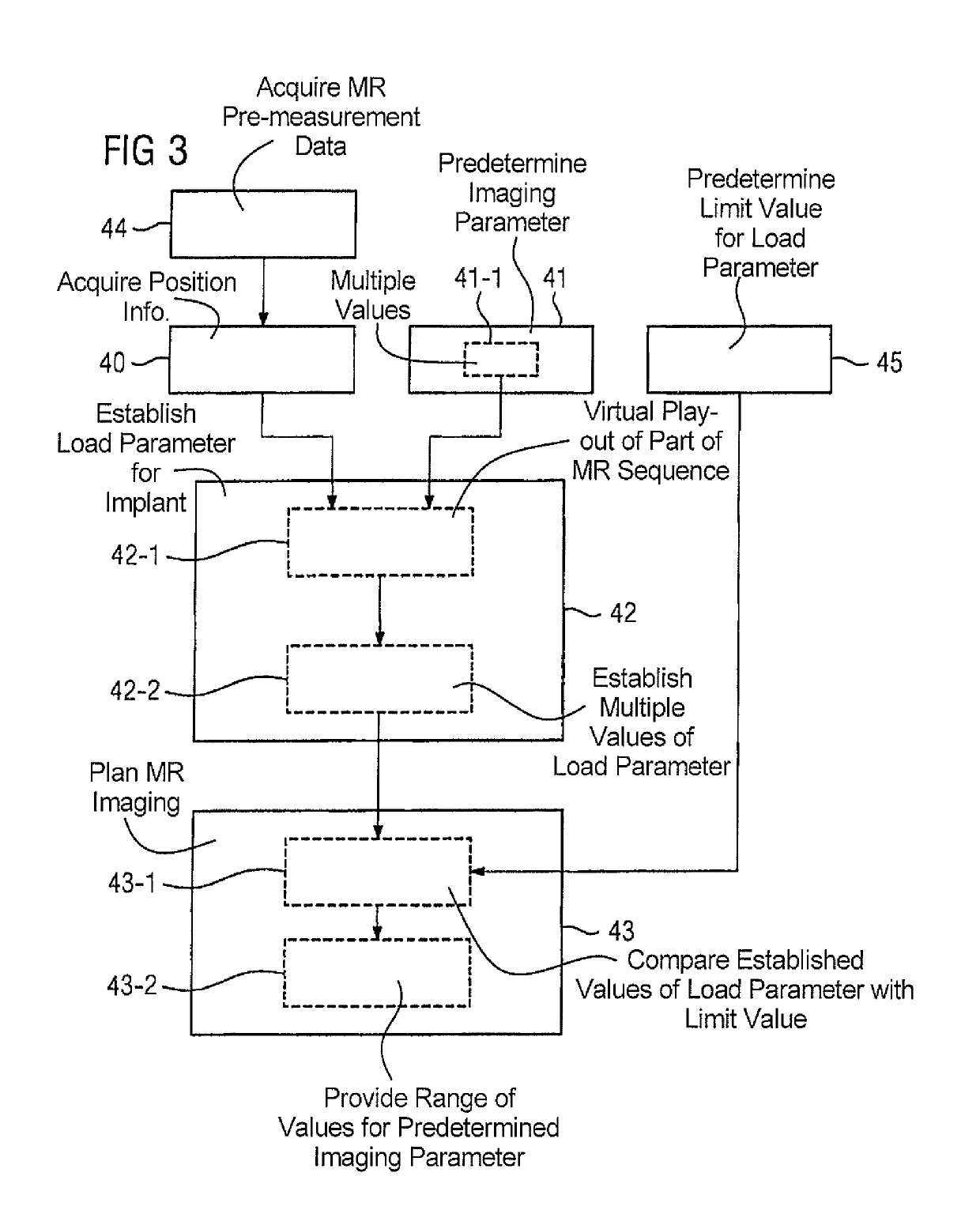Method, computer and magnetic resonance apparatus for planning imaging of a subject that contains an implant
a technology of magnetic resonance imaging and subject, applied in the direction of magnetic variable regulation, measurement using nmr, instruments, etc., can solve problems such as problems such as the creation of gradient fields or radio-frequency fields while magnetic resonance imaging is being carried out, and achieve the effect of improving the planning of magnetic resonance imaging
- Summary
- Abstract
- Description
- Claims
- Application Information
AI Technical Summary
Benefits of technology
Problems solved by technology
Method used
Image
Examples
first embodiment
[0070]FIG. 2 is a flowchart of the inventive method for planning magnetic resonance imaging of a body of an examination object 15, wherein an implant is situated in the body of the examination object 15.
[0071]In a first method step 40, position information of the implant is acquired by means of the position acquisition processor 33. This position information characterizes a position of the implant in the body of the examination object.
[0072]In a further method step 41, at least one imaging parameter for the magnetic resonance imaging is predetermined by the predetermination processor 34.
[0073]In a further method step 42, a load parameter of the implant is established on the basis of the acquired position information and the at least one predetermined imaging parameter by the establishment processor 35.
[0074]In a further method step 43, planning of the magnetic resonance imaging on the basis of the established load parameter of the implant is undertaken by the planning processor 36.
second embodiment
[0075]FIG. 3 is a flowchart of an inventive method for planning magnetic resonance imaging of a body of an examination object 15.
[0076]The description given below is essentially restricted to the differences from the exemplary embodiment in FIG. 2, wherein, as regards method steps, which remain the same, the reader is referred to the description of the exemplary embodiment in FIG. 2. Method steps, which essentially remain the same, are basically given the same reference numbers.
[0077]The embodiment of the inventive method shown in FIG. 3 essentially includes the method steps 40, 41, 42, 43 of the first form of embodiment of the inventive method according to FIG. 2. In addition the form of embodiment of the inventive method shown in FIG. 3 contains additional method steps and substeps. An alternate method sequence to that shown in FIG. 3 is also conceivable, which has only some of the additional method steps and / or substeps shown in FIG. 2. Of course an alternate method sequence to t...
PUM
 Login to View More
Login to View More Abstract
Description
Claims
Application Information
 Login to View More
Login to View More - R&D
- Intellectual Property
- Life Sciences
- Materials
- Tech Scout
- Unparalleled Data Quality
- Higher Quality Content
- 60% Fewer Hallucinations
Browse by: Latest US Patents, China's latest patents, Technical Efficacy Thesaurus, Application Domain, Technology Topic, Popular Technical Reports.
© 2025 PatSnap. All rights reserved.Legal|Privacy policy|Modern Slavery Act Transparency Statement|Sitemap|About US| Contact US: help@patsnap.com


